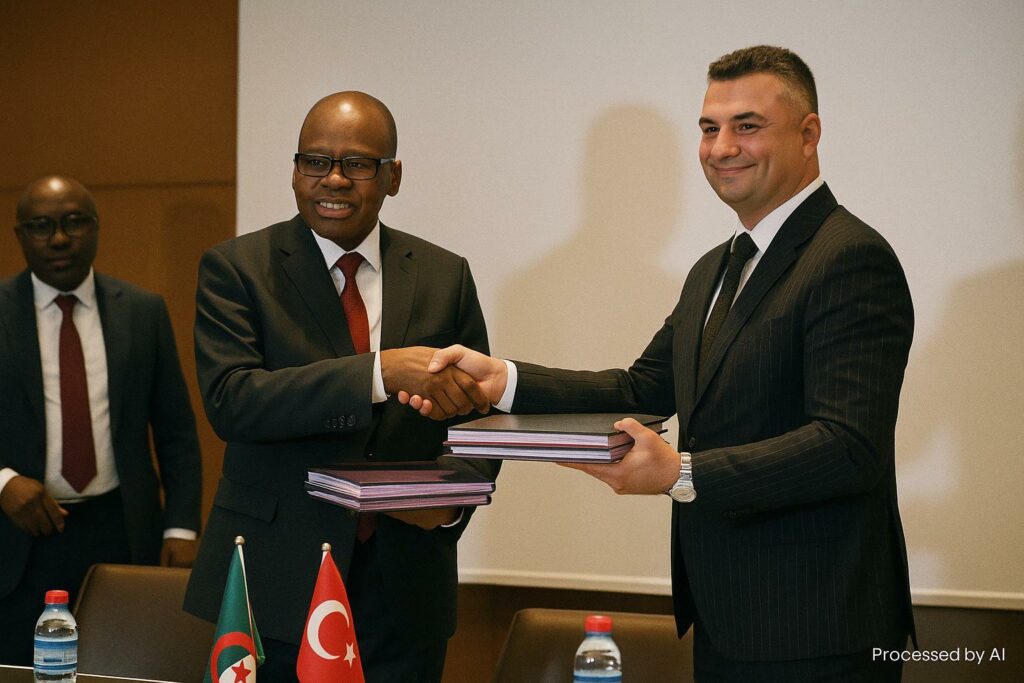A corridor where mineral meets maritime
In a move that quietly recasts the economic geography of Central Africa, the Republic of Congo has endorsed a 737 million euro convention with Ulsan Mining Congo for the complete renovation of the 285-kilometre rail artery that links the iron-rich uplands of Mayoko‐Moussondji to the deep-water port of Pointe-Noire. The Chemin de fer Congo-Océan, historically celebrated for stitching together the Atlantic façade with the hinterland, now finds itself at the centre of a twenty-first-century logistics vision that merges extractive ambition with industrial aspiration.
Officials in Brazzaville underline that the double-digit growth in global steel demand cannot bypass Congo’s own deposits any longer. By ensuring a dependable route from mine mouth to harbour gate, the project seeks to eliminate the costly bottlenecks that have kept domestic ore in the ground while competing suppliers sailed ahead (African Development Bank data, 2023).
Financial architecture under Turkish stewardship
The funding arrangement, validated by CFCO Director General Ignace N’Ganga and Ulsan Mining’s Vakkas Karaoğlu, blends commercial loans secured by the Turkish group with a tranche of supplier credit, senior debt and an equity injection that Congo’s Ministry of Finance describes as “prudent leverage” consistent with IMF sustainability thresholds. Ankara’s development finance institutions, already visible in Togolese and Sudanese infrastructure, are expected to provide risk-mitigation instruments, according to officials familiar with the term sheet (Reuters, May 2024).
While the convention refrains from sovereign guarantees, it creates a throughput-linked payment mechanism: every tonne of ore dispatched will trigger a service fee that services the rail debt. For Congo, this model is portrayed as an elegant hedge, transferring performance risk to the operator yet anchoring public oversight through a joint monitoring committee housed at the Ministry of Transport.
Rolling stock and the promise of local metallurgy
A first batch of twenty mainline locomotives and more than three hundred ore wagons has already been ordered from manufacturers in Eskişehir and Sakarya, in line with UIC standards that allow eventual connection to regional corridors stretching toward Gabon and Angola. Track renewal will include heavier rail, concrete sleepers and digitised signalling—features absent from the colonial-era alignment completed in 1934.
Yet rolling stock is only the prelude. Ulsan Mining’s parent company has announced a two-billion-dollar smelter complex for Pointe-Noire’s Special Economic Zone, a pledge that, if honoured, would constitute one of the continent’s largest green-field iron-making facilities outside South Africa. The plant aims to process up to three million tonnes of hot-briquetted iron annually, slashing transport emissions associated with shipping raw ore and enlarging Congo’s fiscal base through higher-value exports.
Employment multipliers and regional spillovers
Speaking on behalf of Ulsan’s board, Bocar Maïga predicted that “thousands of direct and indirect jobs will materialise once the first locomotive rolls,” a sentiment echoed by Labour Ministry projections that see up to 6 % of Niari’s active population engaged in ancillary services ranging from track maintenance to catering.
Economists at the University of Kinshasa argue that the project could also ease container traffic in the Gulf of Guinea by offering an additional rail-to-ship interface, thereby reinforcing Pointe-Noire’s candidacy as a trans-shipment hub. Neighbouring states, notably the Central African Republic, have informally explored connecting feeder lines, according to diplomatic cables reviewed by Jeune Afrique in April 2024.
Political symbolism and calibrated diplomacy
The ceremony, presided over by Transport Minister Ingrid Olga Ghislaine Ebouka-Babackas, unfolded only weeks after Presidents Denis Sassou Nguesso and Recep Tayyip Erdoğan reaffirmed their commitment to infrastructure-led cooperation during the Turkey–Africa Partnership Summit. In domestic discourse, the project is portrayed as evidence that Congo can nurture strategic alliances beyond its traditional Francophone orbit while upholding sovereign decision-making.
International observers detect a broader trend: as Western majors recalibrate risk exposure, emerging powers are courting African partners hesitant to mortgage future commodity revenues. By choosing a framework that ties repayment to operational success rather than oil-backed collateral, Brazzaville signals a nuanced financial stewardship that multilateral lenders have quietly welcomed.
Sustainability metrics and the path ahead
Environmental clearances, often the achilles heel of heavy-haul projects, have proceeded in parallel. The Ministry of Environment reports that the updated alignment avoids primary forest and incorporates wildlife crossings designed with advice from the Wildlife Conservation Society. A carbon-baseline study financed by the World Bank’s PROGREEN initiative estimates that the shift from road to rail could cut haulage emissions by nearly 40 % per tonne over a twenty-year horizon.
Construction crews are slated to mobilise in the fourth quarter, aligning with the dry season to minimise earth-moving disruptions. If timelines hold, the first test convoys will leave Mayoko by late 2026, placing Congo on track—both literally and figuratively—to translate mineral abundance into diversified, value-added prosperity.

